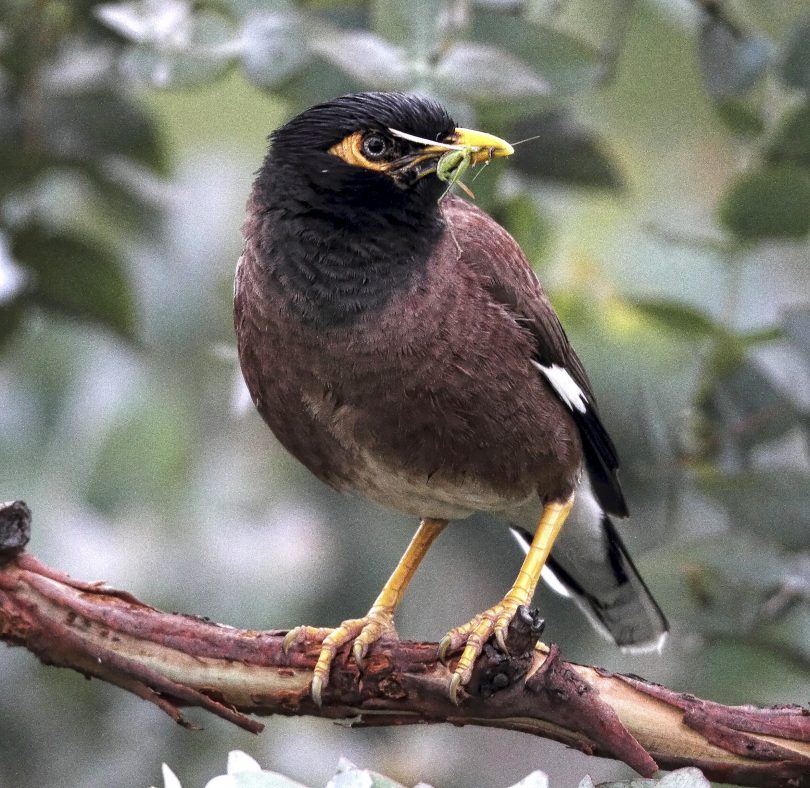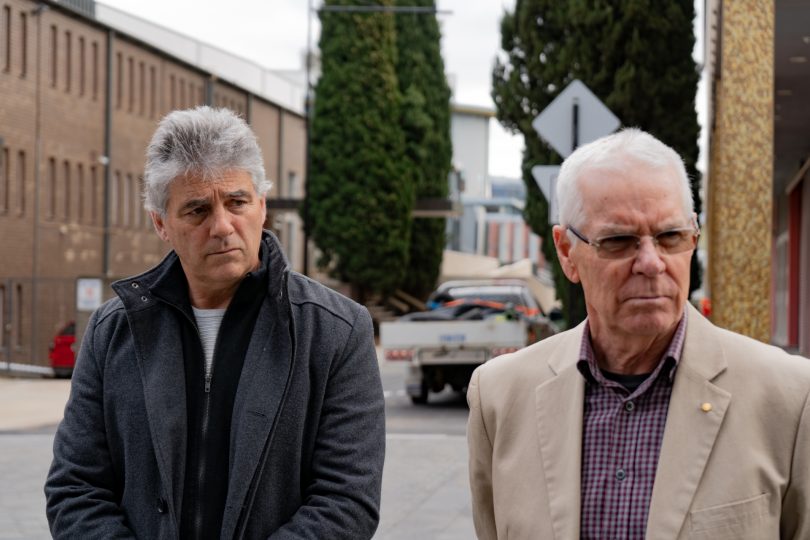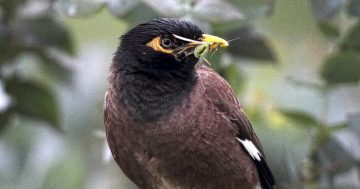
The Indian Myna bird has been designated a pest species in the ACT. Photo: Supplied.
Indian Myna birds are more than a nuisance, they’ve been officially declared a pest by the ACT Government due to their environmental and health impacts.
The bird impacts local habitats by taking over the nests of native species, like kookaburras and rosellas, but can also cause health issues in areas like schools and shopping centres due to pathogens and viruses in their fecal dust.
The new declaration means the birds cannot be bred or kept in captivity unless it is for eradication.
Canberra Indian Myna Action Group (CIMAG) president Bill Handke said the bird is the prominent pest in cities like Melbourne, Sydney and Brisbane, and along the east coast of Australia.
Increasing numbers are causing serious problems for insects and small mammals, as well as posing a small risk to the aviation sector with large cohorts around Canberra Airport, he said.

Dr David Lindenmayer and CIMAG President Bill Handke have welcomed the government’s new announcement. Photo: Dominic Giannini.
Landscape ecologist at the Australian National University Dr David Lindenmayer said winegrowers in the region are experiencing the costs of increasing Myna bird numbers, but they have also affected Canberrans closer to home as an “amenity pest”.
“If you try to have a cup of coffee in Maroubra or other parts of Sydney, or go to Cairns, it is raining Indian Mynas and it is very unpleasant,” he said.
“It transgresses Canberrans enjoyment of having a coffee or what have you outdoors.”
Environment Minister Rebecca Vassarotti said declaring the bird a pest animal under the Pest Plants and Animals Act 2005 was vital to protecting Canberra’s unique biodiversity.
“One of the important aspects is also raising awareness that this is an invasive species,” she said.
“This is a bird that is not like our native birds [and we need] to encourage people to identify them and not encourage them through feeding.”

Environment Minister Rebecca Vassarotti has designated the Indian Myna bird as a pest species. Photo: Dominic Giannini.
Dr Lindenmayer said the ACT needed to get on top of population increases before it grows exponentially.
“When populations explode, it is too late,” he said.
“While populations are still relatively controllable, we need to intervene, so this is a really timely intervention.
“Now is the time to knock the populations down even further. This is the Bush Capital. We need to have Australian bush birds here and not something that is not supposed to be here.”
CIMAG started its program in 2006. Since then, the Indian Myna has dropped from the third most common bird in Canberra to the 24th most common bird.
While Indian Myna numbers crashed in the eight to 10 years after CIMAG began its campaign, there has been a recent spike due to good breeding seasons over the last three years, Mr Handke said.
This is also in part due to Canberrans not having the same access to bird traps after prisoners at the Alexander Maconochie Centre stopped producing them when the area was needed for extra prisoner capacity about five years ago.
Ms Vassarotti said she is in talks with Corrections Minister Mick Gentleman about restarting the program.
Around 2600 people have backyard traps but the number of people using these traps may be as low as 150, Mr Handke said.
“That is why constant recruitment of new people is required,” he said.
A new action plan will be established in consultation with the community.
More information about the Indian Myna is available on the ACT Environment website.




 ... I'll consult my political science friend and get back to you. Mind…
... I'll consult my political science friend and get back to you. Mind… 














